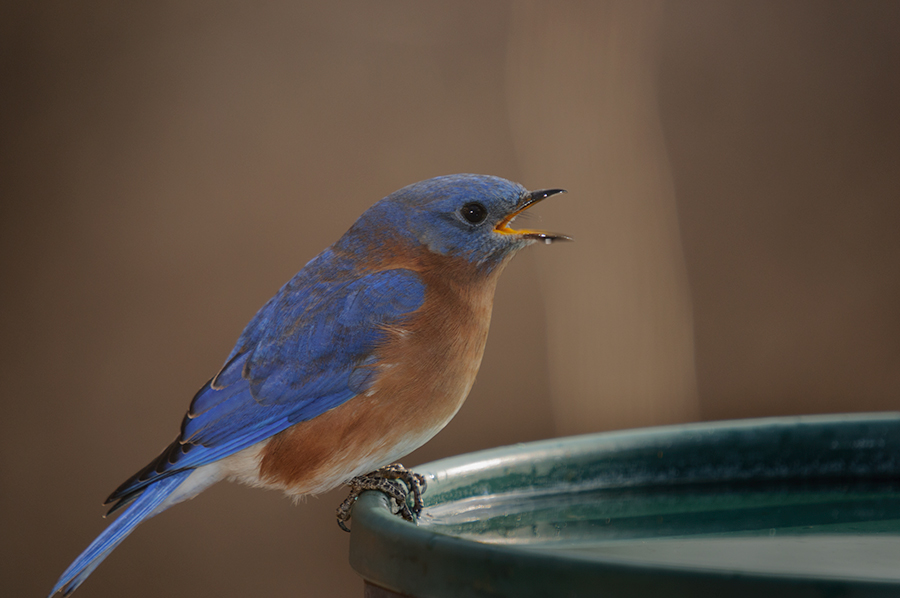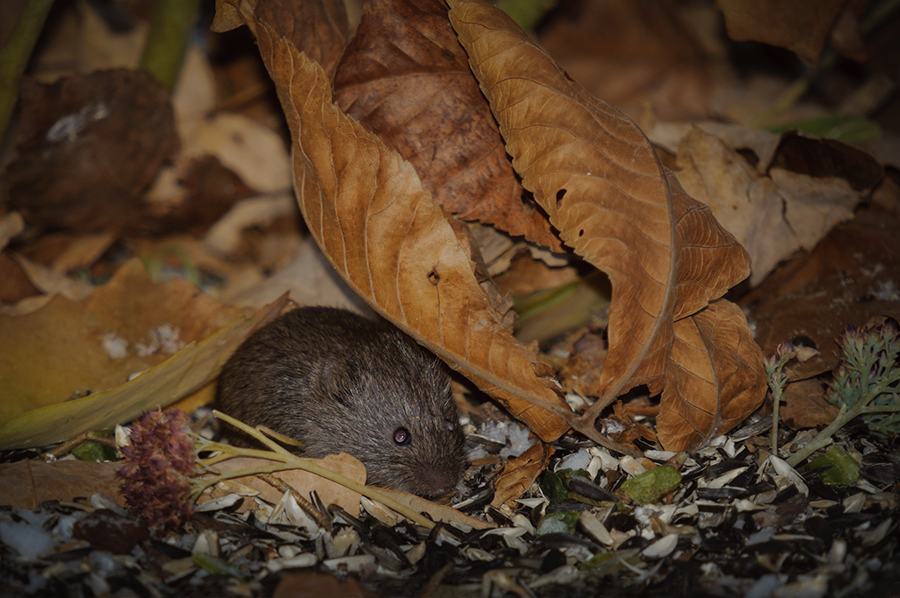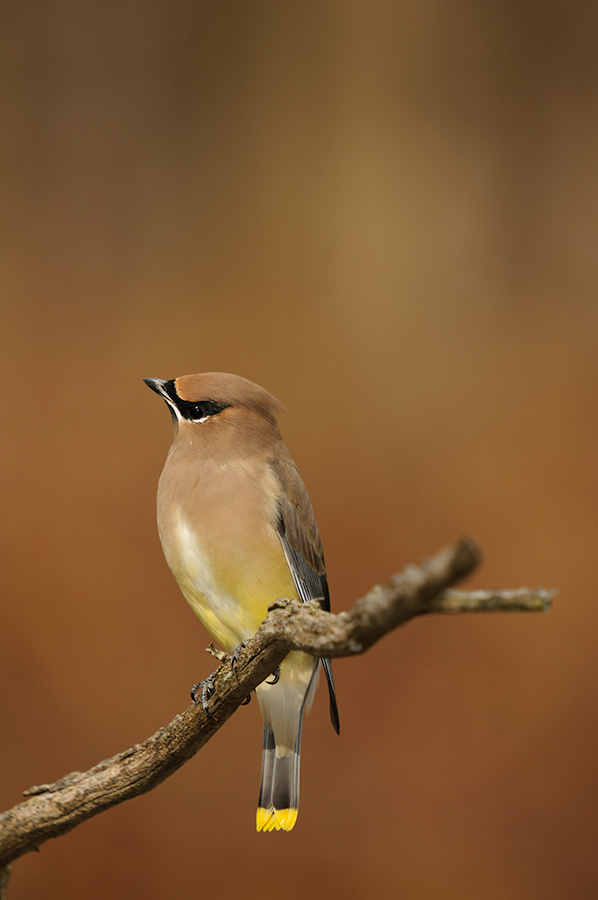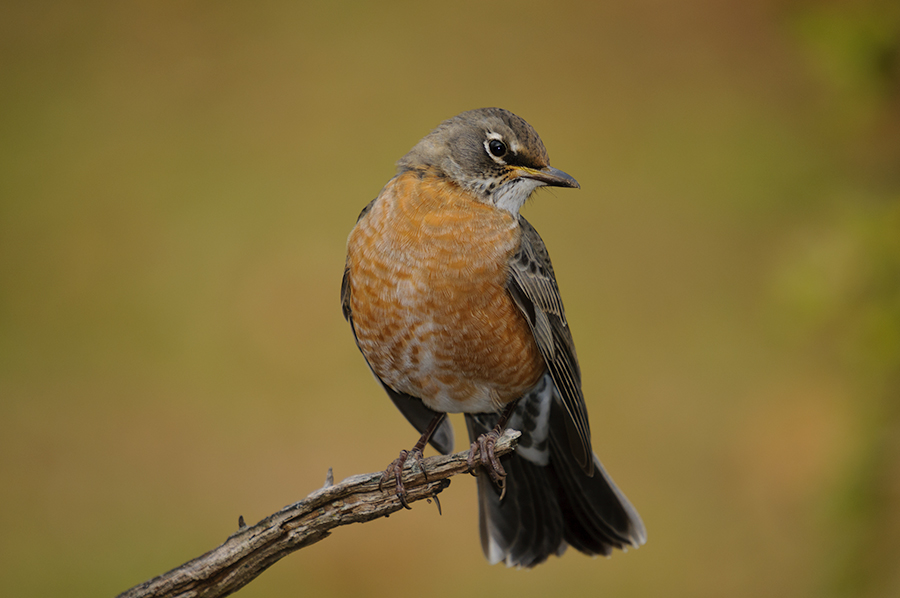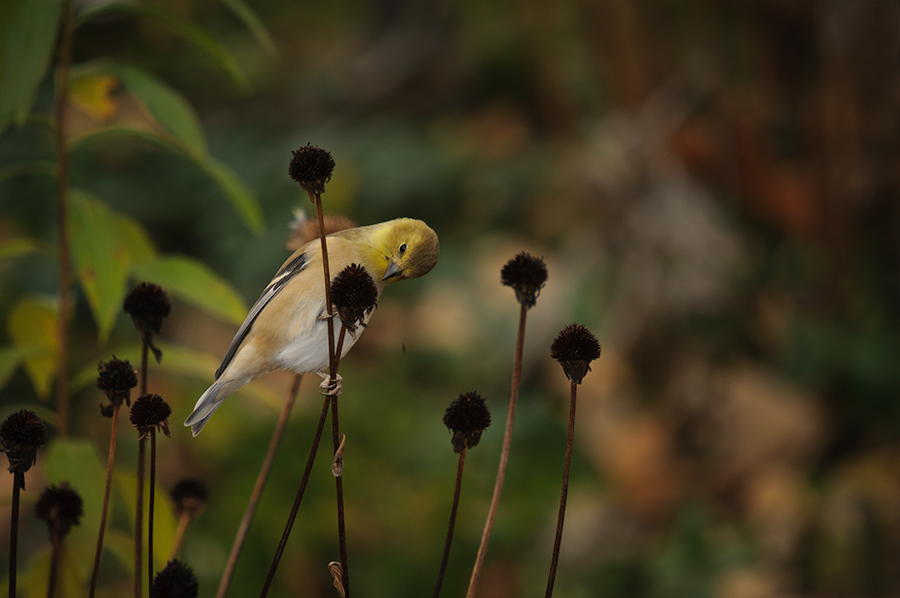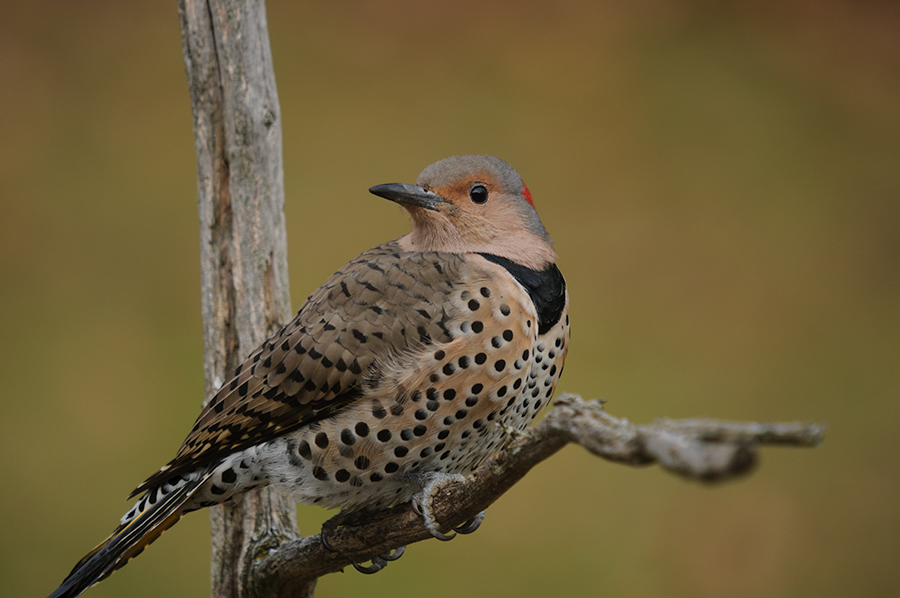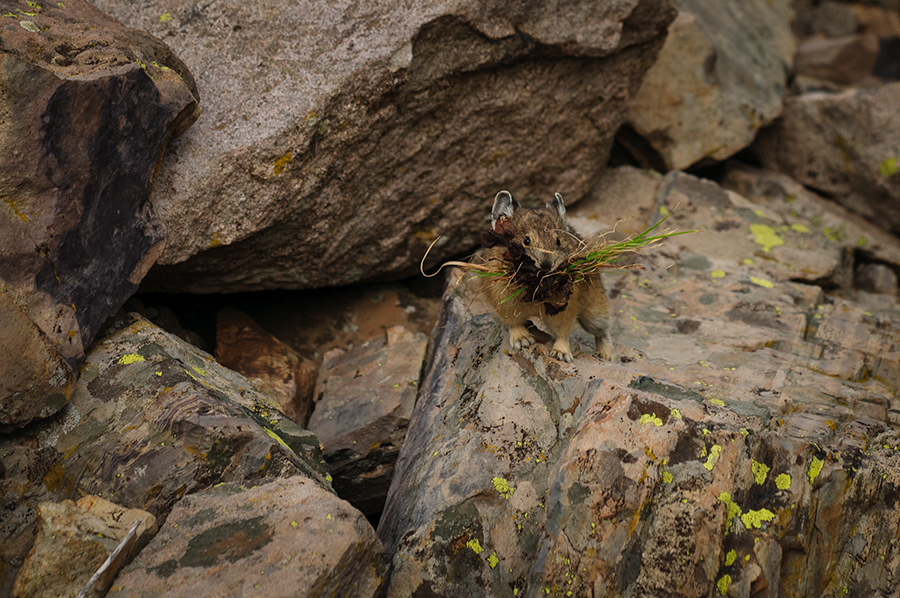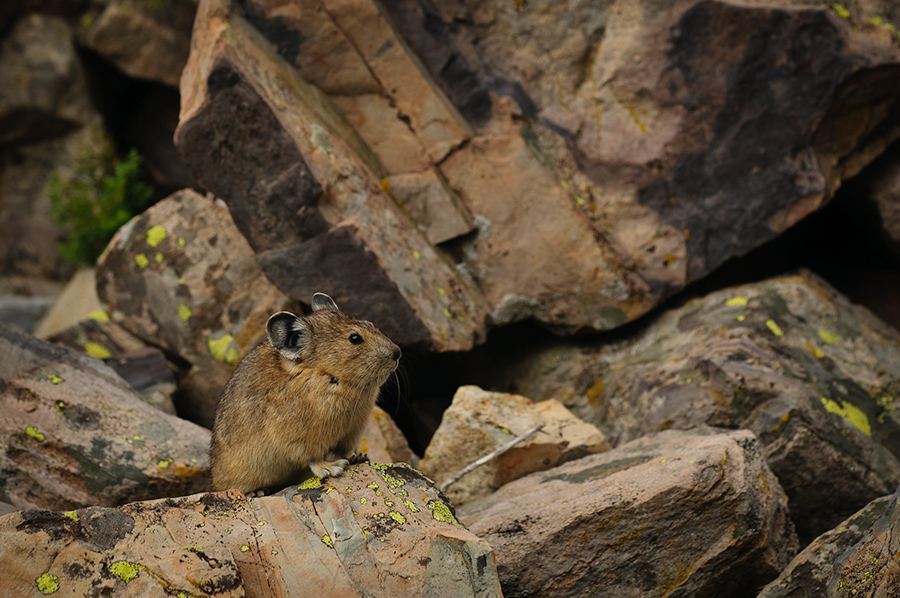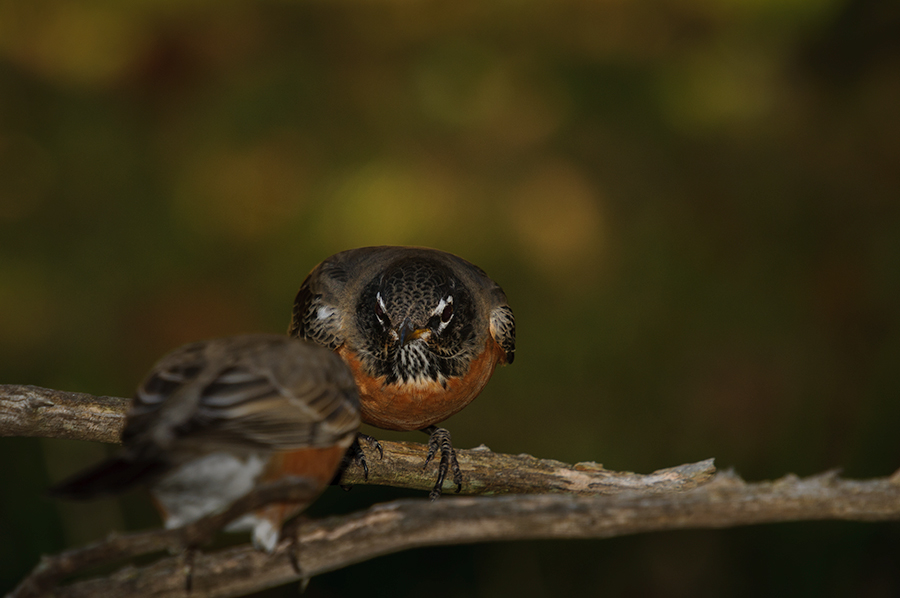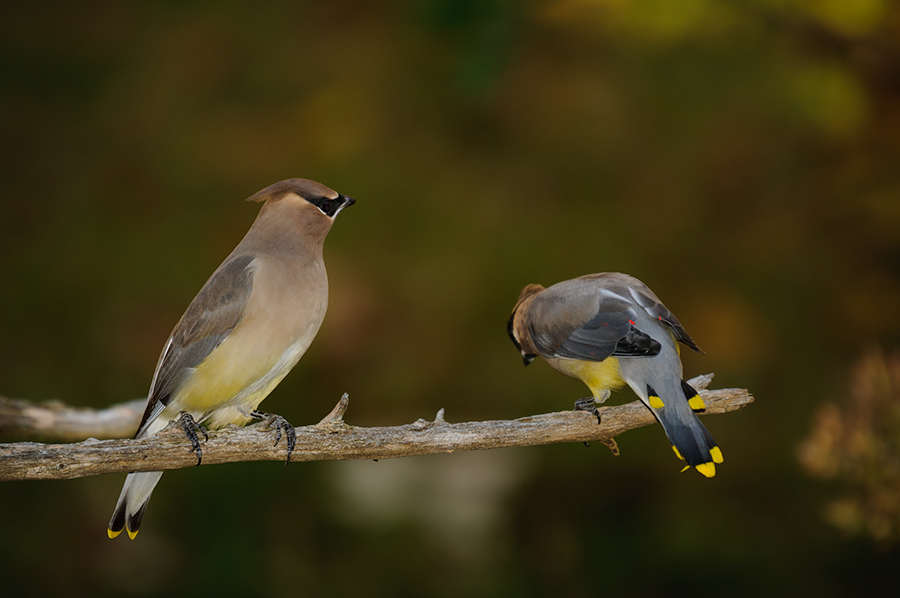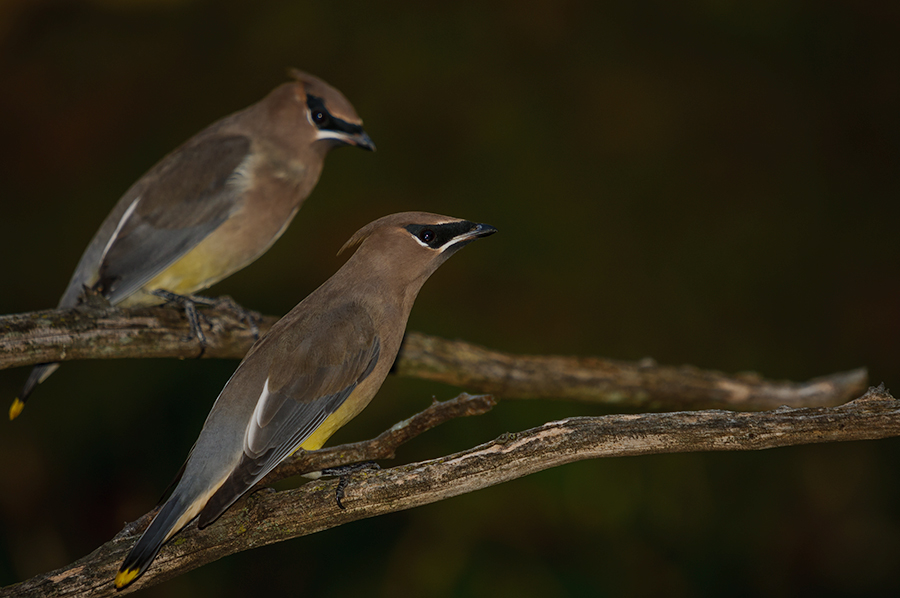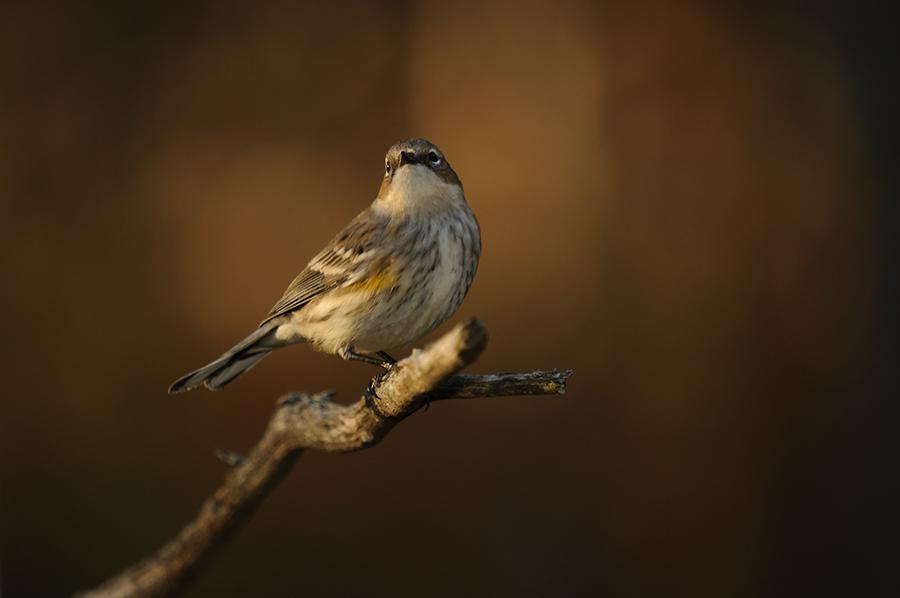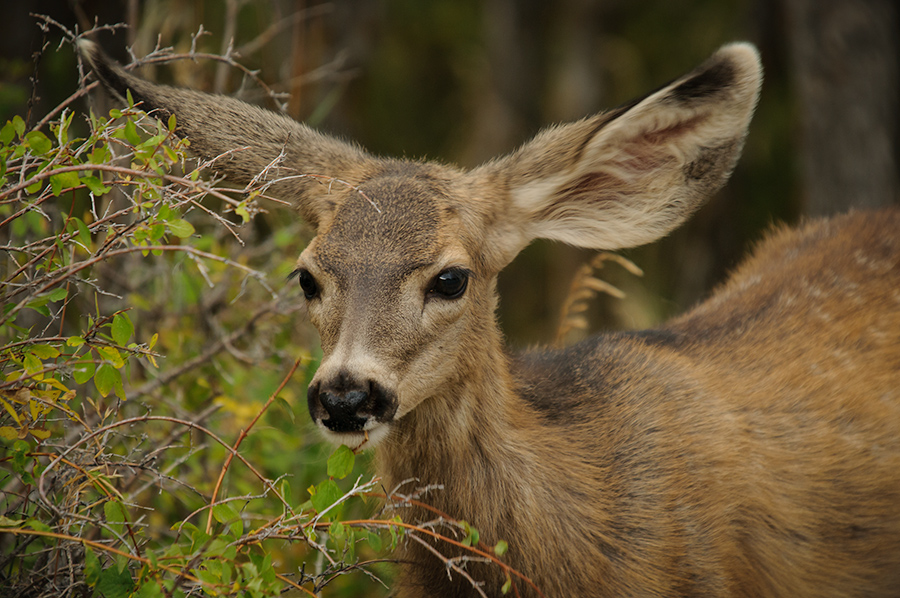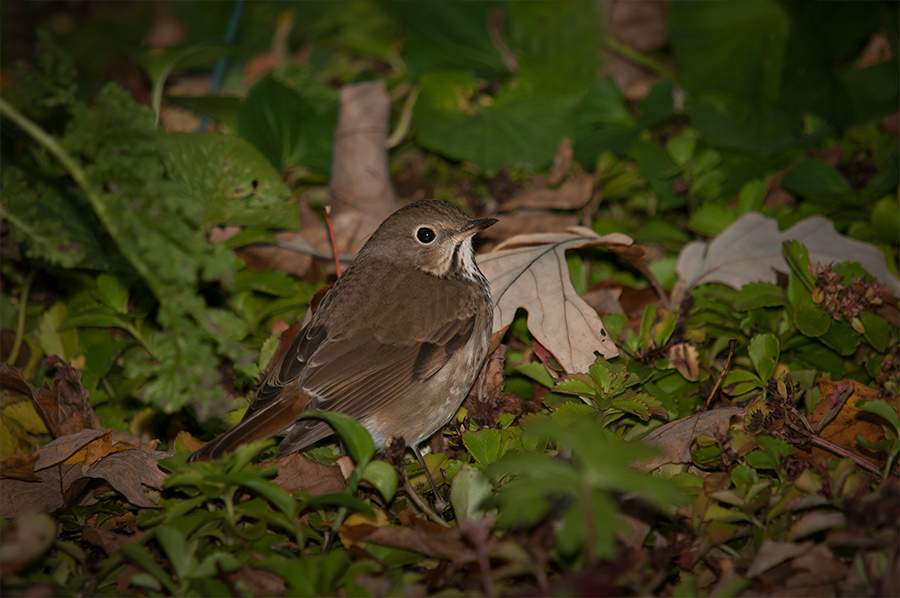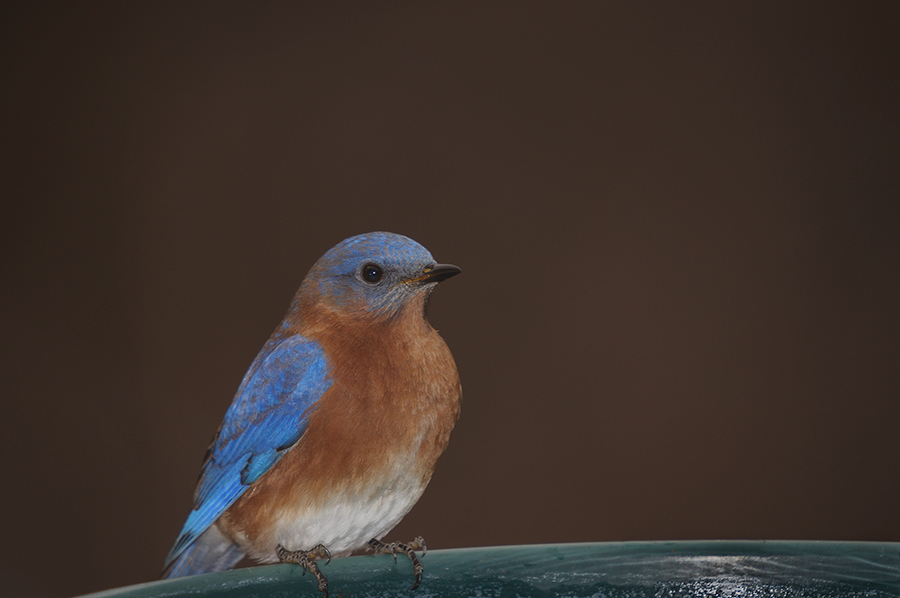
One of the first things I did after my return from Germany was to attach the long lens to the camera and mount the whole rig onto the tripod. I noticed a lot of bird activities in the “backyard-studio” and some of them are so unusual for this time of the year that I like to share my encounters with you.
To my surprise we had up to six Eastern Bluebirds visiting the bird bath on the balcony this week. I have never seen so many bluebirds here at the same time and our records show that we never saw a bluebird in December before. They are in company with a flock of American Robins and several other species, which I will talk about here in the blog soon. The reason we see them is probably the mild weather without any snow on the ground.
I do not like to photograph the birds sitting on the edge of the bird bath. I have placed several perches nearby but the Eastern Bluebirds don’t do me the favor and use them. They rather fly straight to the water source. Well, still better than no birds… ;-) I hope you enjoy!
